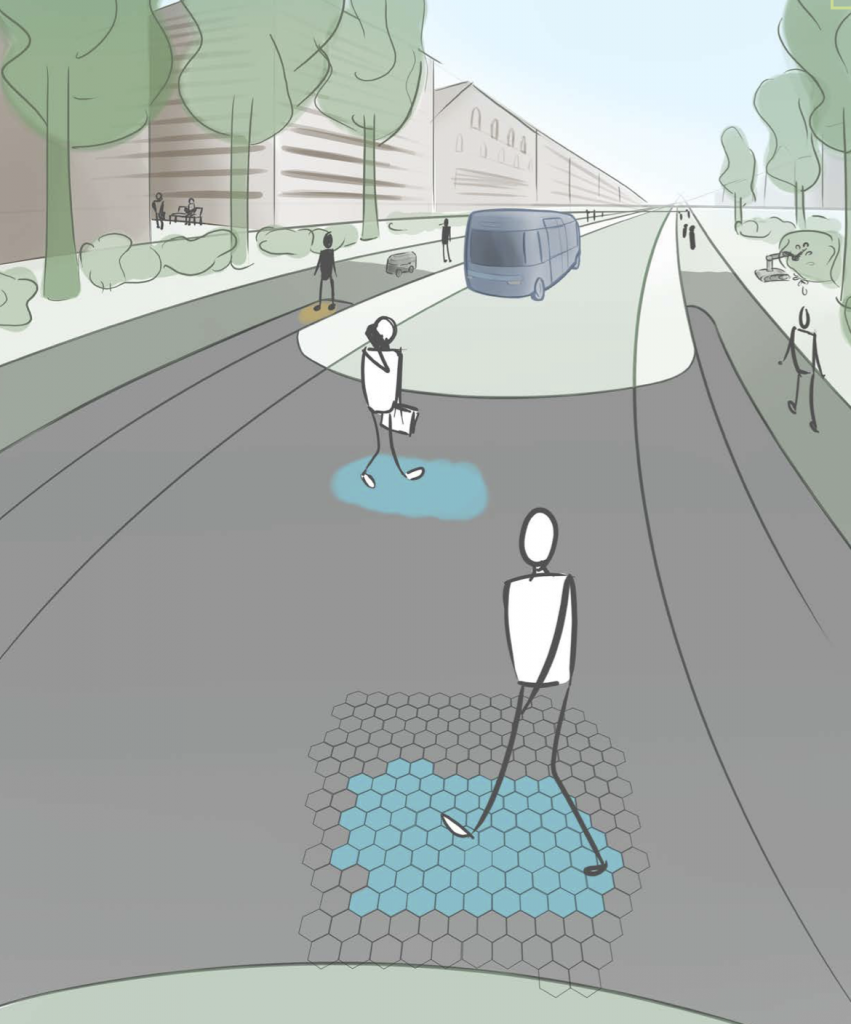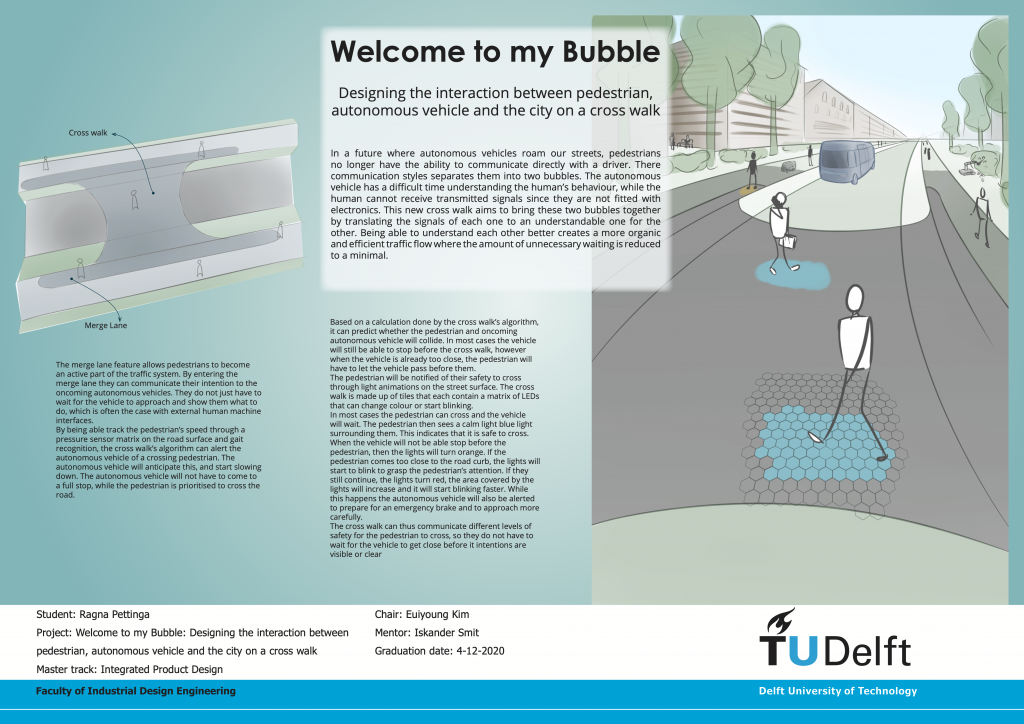Master Graduation Research by Ragna Pettinga
4 December 2020

In a future where most of our transit system consists of the autonomous vehicle, the question is raised how we as humans interact and communicate with them, and they with us. This project explores these interactions in the current time to uncover how humans interact and negotiate in traffic. More specifically how pedestrians do so.
From the analysis, it came forward that such interactions are mainly based on implicit communications – messages sent through behavioral cues that are not necessarily meant as a message. This contradicts the belief that humans use mostly explicit communications such as eye contact and gestures to communicate with fellow traffic participants. The disappearance of the driver might thus not have as much of an impact on the effectivity with which we humans can communicate with autonomous vehicles. However, much research currently studies how more explicit communication tools, such as external human-machine interfaces (eHMI) on the vehicle can help the pedestrian in making their decision to cross. These studies do find that there is a slight benefit to these eHMI systems, however, they are not as significant as one might hope. eHMI systems also present several concerns including their visibility from afar, ambiguity, and one-sided communication. Especially that last concern is one that is central in this project.
The process follows the guidelines of the Vision in Product design process, which explores current-day interactions and context to then formulate a vision for the future. Based on this future and the gained insights a design statement is formulated that contains the goal to be fulfilled by the final design. The goal defined in this project is as follows: designing a crosswalk that prioritizes pedestrian transit while maintaining an efficient interaction between an autonomous vehicle and the pedestrian.
The final design proposal presents a crosswalk that uses animations that come to life through lights integrated into the floor tiles. The crosswalk is unique in its design as it extends onto the sidewalk to allow pedestrians to consciously show their intention to cross towards the autonomous vehicle. The crosswalk is able to register the pedestrian. Since the crosswalk registers the pedestrian early on, it can send a signal to the autonomous vehicle to slow down to give the pedestrian the right of way. The pedestrian receives feedback that shows them how safe it is for them to cross through the use of these animations. A series of animations have been designed and evaluated and based on the results a final set of animations has been designed. These animations will communicate that is either safe or not safe for the pedestrian to cross. As such, the pedestrian is able to actively communicate with the autonomous vehicle and receives personal feedback, instead of being told what to do by the autonomous vehicle what to do. Bringing both their different communication bubbles together and translating them through the crosswalk so both understand what the other will do.

Find the full report here.
